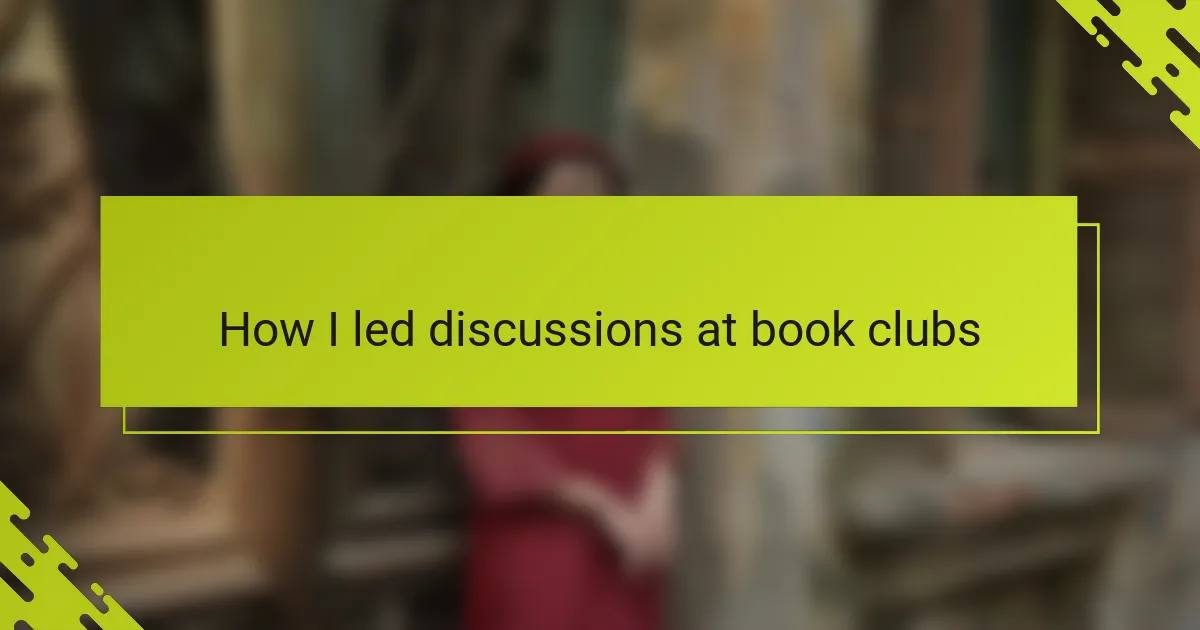Key takeaways
- Queer women literature explores nuanced themes of identity, love, and resilience, offering deep emotional connections that resonate with diverse experiences.
- Inclusive discussions are essential in book clubs; creating a safe space where all voices are valued enriches conversations and fosters understanding.
- Encouraging diverse perspectives, including dissent, can lead to unexpected insights and deeper engagement with the material.
- Handling sensitive topics with empathy and patience promotes a respectful environment, allowing for personal growth and open dialogue.
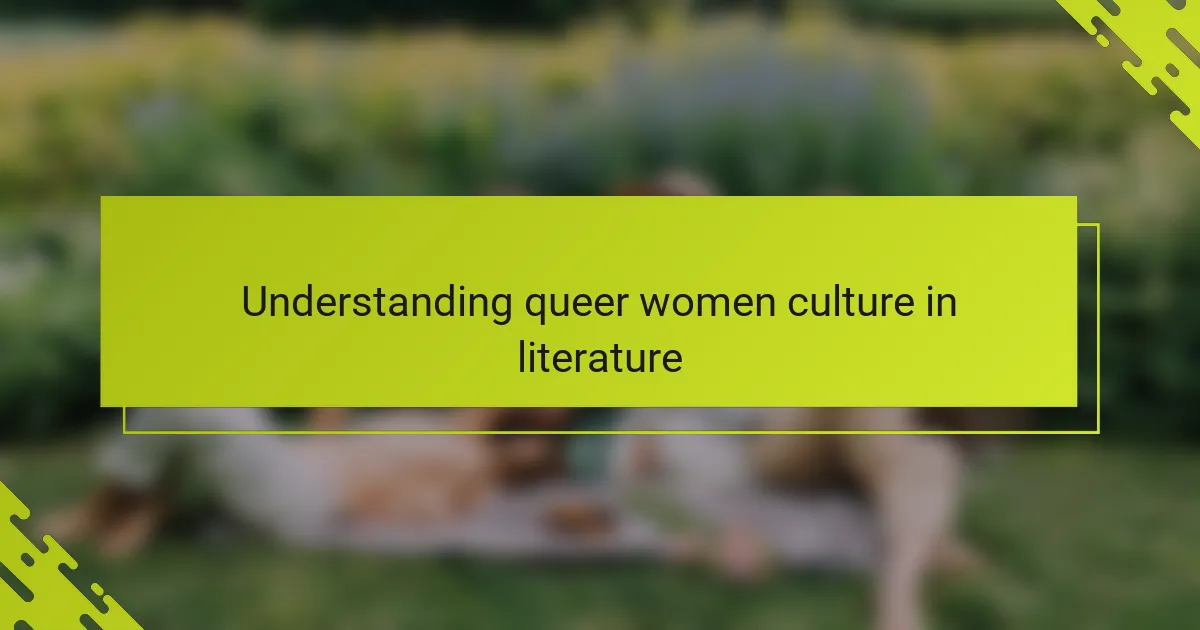
Understanding queer women culture in literature
When I first dove into queer women literature, I was struck by how layered and varied the stories were—far beyond what I had expected. These narratives often reveal the complexity of identity and community in ways that resonate deeply, especially when shared in a collective space like a book club. Have you ever noticed how a single passage can mirror your own feelings or challenges, making the experience profoundly personal and yet universally relatable?
What I’ve come to appreciate is how queer women culture in literature isn’t just about representation; it’s about exploring the nuances of love, struggle, and resilience through an authentic lens. For instance, reading about characters who navigate their identities in everyday life helped me empathize more fully with experiences different from my own. It makes me wonder—how often do mainstream stories miss these crucial emotional layers that queer narratives so readily highlight?
In our discussions, I’ve seen how unpacking these cultural and emotional insights creates a safe space for vulnerability and connection. The way authors weave history, politics, and personal expression challenges us to rethink assumptions and engage more thoughtfully. Isn’t it in these moments of shared reflection that the real power of literature shines through?

Key themes in queer women narratives
One theme I always notice is the exploration of self-discovery and coming into one’s identity. Queer women narratives often portray that messy, beautiful journey of figuring out who you are beyond societal labels. It reminds me of how during one book club, a participant shared how seeing a character’s struggle mirrored her own, and suddenly, the story felt less isolating and more like a lifeline.
Another powerful thread is the complexity of relationships—romantic, familial, and communal. These stories don’t shy away from the tensions and joys of connection, showing how love can be both a source of strength and challenge. I find myself asking, haven’t we all experienced the push and pull of wanting to belong while also needing to assert our true selves?
Resistance and resilience also come through strongly, often intertwined with history and activism. They showcase how queer women have navigated oppressive structures, carving out spaces for freedom and expression. When we discuss these themes, it sparks an energy in the room, as if the stories are calling us to acknowledge past struggles and inspire future courage.

Preparing for book club discussions
Preparing well for book club discussions has always been a game-changer for me. I make it a point to not just read the book but to jot down passages that struck a chord or raised questions for me. Have you ever found yourself wanting to dive deeper into a particular scene or character after reading? Those notes become the sparks that ignite richer conversations.
I’ve learned that understanding the author’s background and the historical context of the book adds layers to our talks. When I shared these insights once, it shifted the group’s perspective, helping us see the story not just as fiction but as a reflection of real struggles and triumphs. It makes me wonder how much we miss when we read without that extra curiosity.
Sometimes, I prepare a few open-ended questions to gently steer the discussion without making it feel scripted. For example, asking what a character’s choices reveal about identity or community opens so many doors. It’s exciting watching how these questions invite different experiences and emotions to surface, enriching our collective understanding.
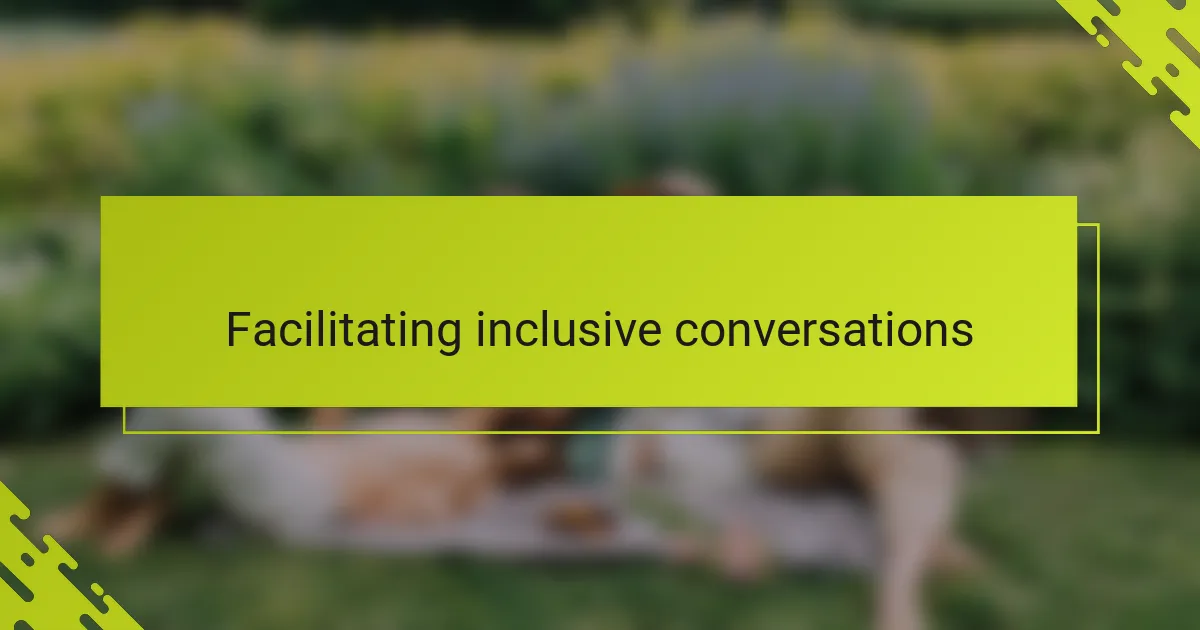
Facilitating inclusive conversations
Creating an inclusive atmosphere during discussions means making sure every voice feels not just heard but valued. I remember early on, noticing how some members hesitated to share, so I started asking gentle, open questions that invited quieter voices to step in. Have you ever felt that subtle shift when someone who’s been silent suddenly offers a perspective that changes everything?
Sometimes, it’s as simple as setting clear intentions at the start—reminding everyone that our book club is a judgment-free zone where vulnerability is welcomed. I find that when people know it’s safe to express confusion or disagreement, the conversation grows richer and more authentic. Isn’t that the kind of openness we all crave, especially in spaces centered on identity and experience?
I also pay attention to language, encouraging us to use terms that reflect everyone’s identities respectfully. There was a moment when a participant corrected a phrase I hadn’t considered, and that taught me how essential it is to keep learning from one another. Doesn’t that collaborative spirit make the discussion feel less like a lecture and more like a shared journey?
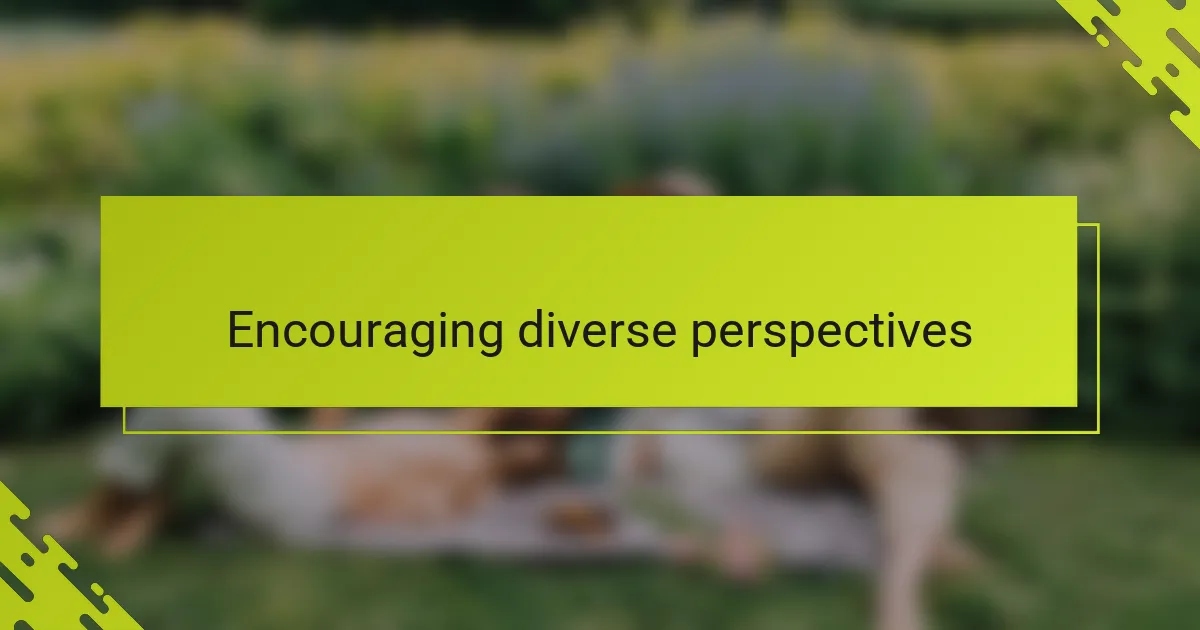
Encouraging diverse perspectives
Encouraging diverse perspectives means inviting not just agreement, but also dissent and curiosity. I’ve seen how a simple question like “How did this part resonate differently with you?” can unlock surprising insights and bring out voices I hadn’t anticipated. Isn’t it fascinating when someone’s disagreement leads the whole group to reconsider what we thought we understood?
Sometimes, diversity shows up in the small moments—like when a member draws connections between the book and her own cultural background or personal history. Those moments remind me that queer women’s experiences are not monolithic, but rich tapestries woven from many threads. Have you ever been struck by how a fresh viewpoint can deepen your own understanding of a story?
I’ve also found that modeling openness myself helps set the tone. Sharing my own uncertainties or how a passage challenged my assumptions encourages others to do the same. This kind of vulnerability makes space for empathy, turning our book club from a discussion into a true exchange of lived experiences. Wouldn’t you agree that this is what makes literature come alive?

Handling sensitive topics effectively
Navigating sensitive topics in book clubs isn’t always easy, but I’ve found that grounding the conversation in empathy makes a huge difference. When difficult themes arise, I try to acknowledge the discomfort openly—sometimes saying, “I know this can feel heavy, so let’s take space to honor each person’s feelings.” Have you noticed how naming tension can actually ease it?
One time, a story touched on trauma in such a raw way that the room fell silent. I gently invited members to share only if they felt comfortable, which shifted the pressure off. Creating that gentle pause showed me how powerful it is to balance openness with respect for personal boundaries. Isn’t it amazing how a little patience can hold so much?
I also make it a point to remind everyone that differing reactions are valid. When a perspective clashes with my own, I lean into curiosity rather than judgment, asking, “What do you think shaped your view here?” That approach often leads to surprising insights and deepens our collective understanding. Have you found that welcoming discomfort leads to growth in your conversations?
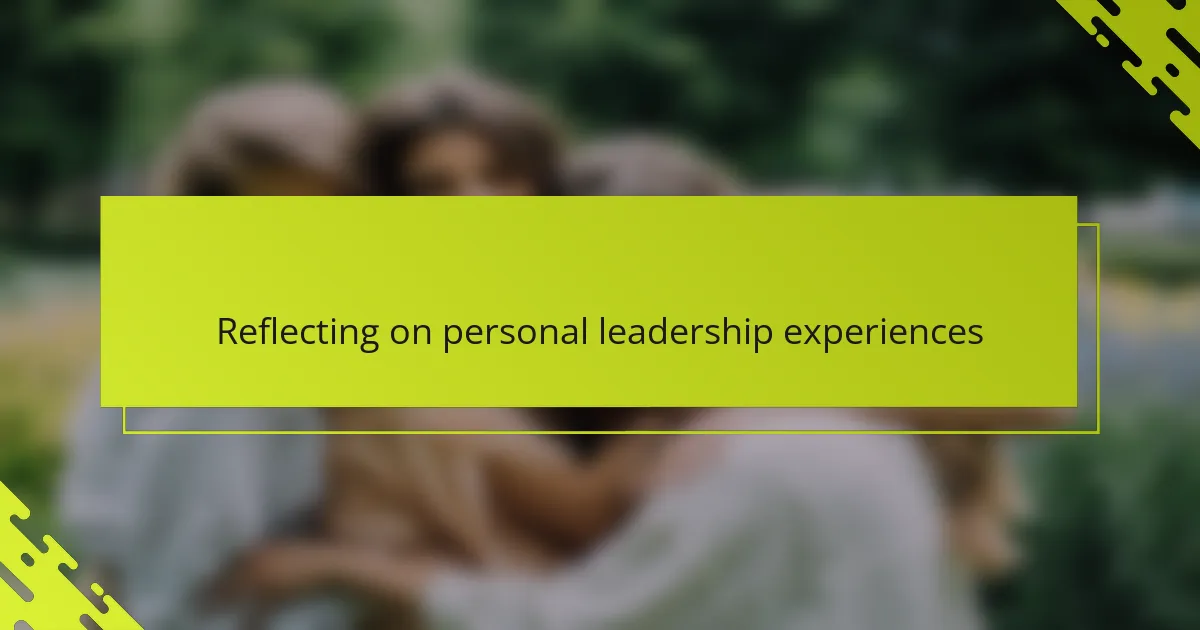
Reflecting on personal leadership experiences
Reflecting on my own leadership in these book club discussions, I realize how much I’ve grown by leaning into moments of uncertainty. There were times when I wondered if I was steering the conversation well or unintentionally silencing someone. Have you ever felt that tension between guiding and listening? For me, embracing that balance became a learning curve that deepened my respect for each voice in the room.
I recall one discussion where a participant challenged my interpretation, and instead of feeling defensive, I asked her to elaborate. That exchange taught me how vital it is to hold space for differing views—not just to keep peace but to enrich our understanding. Moments like these remind me that leadership isn’t about having all the answers, but about fostering trust and curiosity.
It also struck me how personal vulnerability, when I shared my own reflections or uncertainties, encouraged others to open up in ways I hadn’t anticipated. Have you noticed how a little openness can unravel barriers? Leading isn’t just about managing logistics; it’s about creating connections that transform the conversation into a collective journey.
